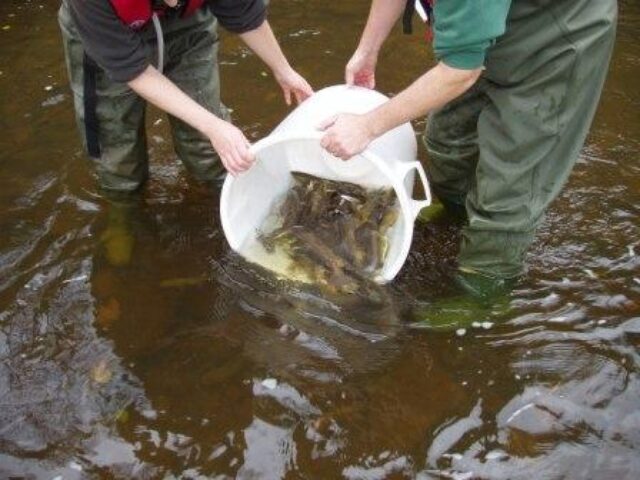Some angling clubs and fishing syndicates use farmed brown trout to boost the number and size of fish available to anglers and (some say) to allow the trout populations to withstand high levels of fishing pressure, especially if anglers wish to kill fish to eat.
However, many fisheries now stock fewer fish or have stopped stocking altogether, investing the money saved in habitat improvement to support the population of wild trout, and moving to catch and release.
The general picture from these clubs (see the case studies below) is that anglers are catching more, and in some cases, bigger, wild trout when farmed fish are no longer stocked. Even in low productivity rivers, trout will eventually grow to larger sizes. Our Conservation Officer team are available to help any angling club or syndicate looking make changes to their fisheries management.
The regulatory agencies in the UK and Ireland require all farmed brown trout stocked into rivers and some lakes to be infertile (triploid) and to be stocked under licence. Where there’s a history of their stocking, the regulatory agencies might also allow rainbows to be stocked out. Details are on the appropriate agency websites e.g. EA here; Scottish Government here.



